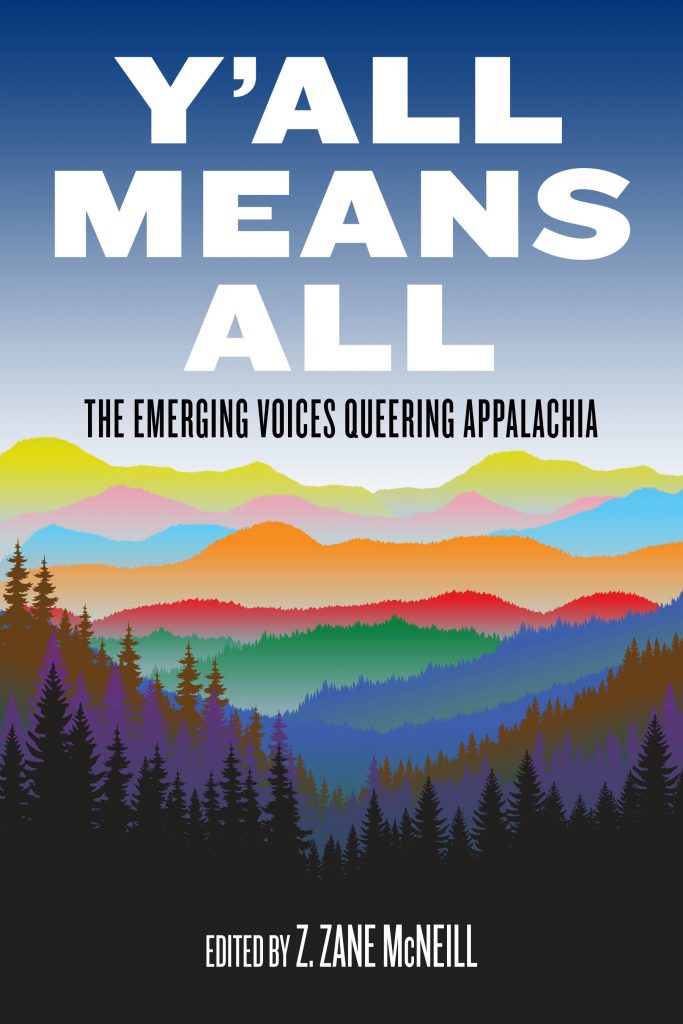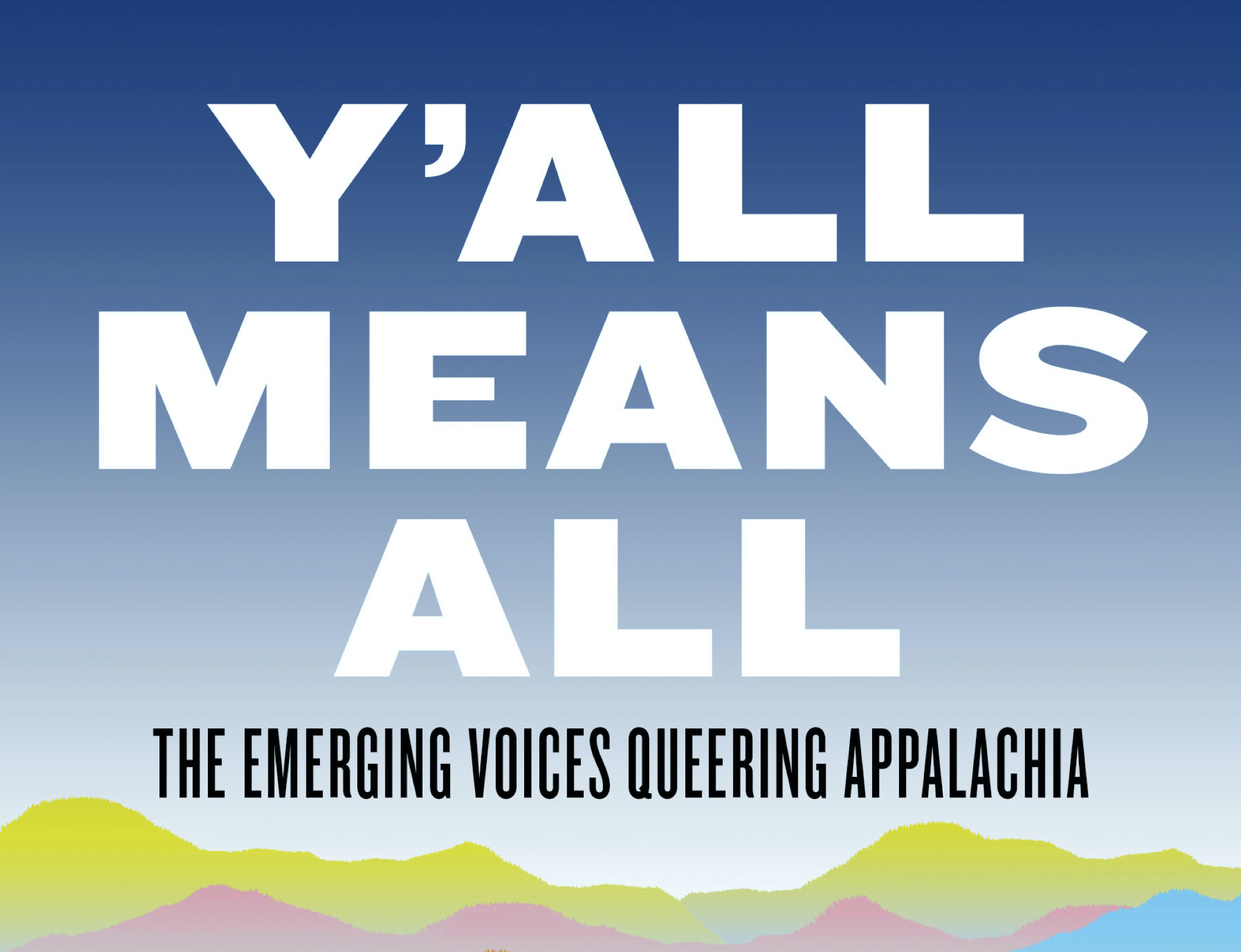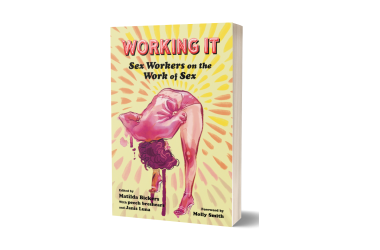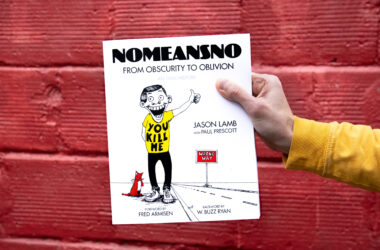By Chrislove
DailyKos
May 29th, 2022
LGBTQ Literature is a Readers and Book Lovers series dedicated to discussing literature that has made an impact on the lives of lesbian, gay, bisexual, transgender, and queer people. From fiction to contemporary nonfiction to history and everything in between, any literature that touches on LGBTQ themes is welcome in this series. LGBTQ Literature posts on the last Sunday of every month at 7:30 PM EST. If you are interested in writing for the series, please send a message to Chrislove.
Growing up in the hills of western Pennsylvania, I never considered myself to be “Appalachian.” I was aware of the term, I knew of the place called “Appalachia”—which, according to just about any map depicting the region, includes the place I was born—but never thought of myself in those terms. It wasn’t until I moved away to Texas (and found myself needing to describe where I’m from to my new social circles) that I developed something resembling an Appalachian identity. Although, to be clear, I still only consider myself Appalachian-adjacent, but it’s also true that I feel more kinship with West Virginians than I do with most people here in Texas.
Of course, in the wake of the 2016 election, many Americans suddenly became interested in this region of the country, which went so heavily in favor of Donald Trump. I’m sure I don’t need to remind anybody here of J.D. Vance’s Hillbilly Elegy and its depictions of Appalachian people. This is a region “flattened” by people on the right and on the left, its people reduced to stereotypes and thought of in monolithic terms. That’s part of why I was so drawn to Z. Zane McNeill’s new edited collection Y’all Means All: The Emerging Voices Queering Appalachia.
Y’all Means All is a celebration of the weird and wonderful aspects of a troubled region in all of their manifest glory! This collection is a thought-provoking hoot and a holler of “we’re queer and we’re here to stay, cause we’re every bit a piece of the landscape as the rocks and the trees” echoing through the hills of Appalachia and into the boardrooms of every media outlet and opportunistic author seeking to define Appalachia from the outside for their own political agendas. Multidisciplinary and multi-genre, Y’all necessarily incorporates elements of critical theory, such as critical race theory and queer theory, while dealing with a multitude of methodologies, from quantitative analysis, to oral history and autoethnography.
This collection eschews the contemporary trend of “reactive” or “responsive” writing in the genre of Appalachian studies, and alternatively, provides examples of how modern Appalachians are defining themselves on their own terms. As such, it also serves as a toolkit for other Appalachian readers to follow suit, and similarly challenge the labels, stereotypes and definitions often thrust upon them. While providing blunt commentary on the region’s past and present, the book’s soul is sustained by the resilience, ingenuity, and spirit exhibited by the authors; values which have historically characterized the Appalachian region and are continuing to define its culture to the present.
This book demonstrates above all else that Appalachia and its people are filled with a vitality and passion for their region which will slowly but surely effect long-lasting and positive changes in the region. If historically Appalachia has been treated as a “mirror” of the country, this book breaks that trend by allowing modern Appalachians to examine their own reflections and to share their insights in an honest, unfiltered manner with the world.
As somebody who grew up gay in Appalachia, I have a keen interest in the topic of queer resistance in this region. Had it not been for lack of research funds allowing me to travel, I might have thought seriously about pursuing a dissertation in this area when I was in grad school. Because as scant as LGBTQ historiography is on rural queer people in general, it’s even scanter when it comes to queer Appalachians. It’s not that the stories aren’t there—it’s that the stories aren’t being recorded. So when I saw this book, I couldn’t order it quickly enough, and I knew I had to highlight it for this series.
I’m really glad I read this book. I will warn potential readers that the book is a little heavy on critical theory, which I’ll admit almost put me off from reading it (no offense to critical theory, it’s just not my thing). I would recommend pushing through, however, because the essays contained in this collection are well worth reading and provide a unique lens through which to view Appalachia and its people. From scholars to artists to grassroots activists, the voices in Y’all Means All push back against the notions that Appalachia is a monolith and queer people don’t have a place in this part of the country. It’s a rather difficult book to write about for this series, however. With so many distinct topics addressed by the several individual writers, I know I will not do it justice. So I’m not even going to try (lol). What I would like to do in this diary is simply provide an overview of the collection (focusing on the main ideas behind its creation and some of its major topics), and then highlight my personal favorite essay.
One thing that really comes through in this collection is that it’s not just about queer Appalachians—it’s about Appalachia as a “queered” place. This is an idea I’d never considered before, and I wonder how much it has to do with my own resistance to identifying as “Appalachian.” Because—even more so after 2016—it really is a place that is “othered.” McNeill begins the introduction with this idea:
Born and raised in West Virginia, I felt marked as “Other” when outside of the region. “You’re from Appalachia? But you sound so smart!” “Did you grow up mudding and eating deer jerky?” “Were your parents cousins?” The more I’ve considered what makes me queer, the more I have questioned if Appalachia itself is a queered place—a region rendered deviant through the lenses of the opioid crisis, poverty, and environmental degradation.
He continues:
Appalachia is more than a geographic region—it is an environmental space with a history of natural resource extraction; a cultural construction fashioned by conservatives and liberals to support revisionist arguments of what “America” is, and which bodies represent “America”; and a politically contested space that pushes disadvantaged voices to the margins.
Of course, no contemporary study of Appalachia could be done without considering the damage done by J.D. Vance’s Hillbilly Elegy, which (as you surely remember) became the book for understanding Appalachia after Trump’s election. About Vance, McNeill has the following to say:
This portrayal of Appalachia is inherently politicized; it blames the economic pressure that Appalachia faces not on the region being ravaged by extractive industries but on an almost genetic, essentialized failing of its inhabitants. Vance’s book actively ignores the roles of capitalism, monopolies, and corporations in devastating Appalachia, never touches on his Appalachia existing because of the colonization of Indigenous lands, and ignores the lived experience of nonwhite folks who call the mountains home.
Hillbilly Elegy might be the most prominent example of this wrongheaded and simplistic understanding of Appalachia, but it is far from alone in the genre. And this gets to why Y’all Means All exists and what it is trying to do:
Y’all Means All moves past the recent reactionary trend in writing on Appalachian Studies, instead centering marginalized voices in explaining how they understand themselves as simultaneously queer an Appalachian individuals. This act of self-definition is extremely important in queer-Appalachian communities, which have been historically written out of metronormative LGBTQIA+ and other Appalachian histories. As Appalachian educator Adam Denney has written, “Make no mistake: erasure is an act of violence.” By naming ourselves and our queerness, we create a queer counterpolitics that can reimagine Appalachia as queerly oriented. “As narratives are claimed and reclaimed, we create spaces identifying with multiple aspects of self.” This means that through queer storytelling, those who identify as queer and Appalachian can create their own narratives to explain what queerness in Appalachia looks like.
[…]
For many of us, self-definition of Appalachia is in and of itself activism: by reclaiming what it means to be “Appalachian,” we imagine a place of resilience in which y’all really means all.
The book is divided into three sections. In the first section, the essays wrestle with the (internal and external) tension that exists between “queer” and “Appalachian” identities. This section, in particular, really pushes back against the monolithic conception of Appalachians, which erases marginalized people. For example, in “For Black Appalachians, Southerners, and Rural Folks” by M.AMA, the author discusses the tone and identity policing they face as a Black person from Appalachia, both in Northern liberal and queer-Appalachian spaces.
The second section of the book “invites activists, artists, and scholars to theorize a queer-Appalachian framework that engages with Appalachian queer histories, contemporary queer ecologies, queer temporalities, queer embodiment(s) of Appalachian protest, and the role of queer of color critique in Appalachian activisms.” My favorite piece in this section was “Your Own Country” by Samantha Allen, which explores the queer history of Johnson City, Tennessee, and highlights the historical importance of a Johnson City doctor whose kindness and acceptance during the AIDS crisis drew a number of queer people into the city.
And finally, the third section of the book explores the importance of queer-Appalachian storytelling, myths, and icons. It’s actually an essay in this section that I’d like to focus on for the rest of the diary: “The Man, the Moth, the Legend: The Role and Function of Folklore in Queer-Appalachian Social Media Communities” by Brent Watts.
I’ll be honest, this was the very first essay from the book that I read. I love cryptid stories, and the Mothman is probably my favorite of all of the cryptids (if you’d told me before that I’d someday be writing about the Mothman in an LGBTQ Literature diary, I probably wouldn’t have believed you).

If you’re not familiar with the Mothman story, it originates in Point Pleasant, West Virginia, in 1966. From Wikipedia:
On November 15, 1966, two young couples from Point Pleasant—Roger and Linda Scarberry, and Steve and Mary Mallette—told police they saw a large grey creature whose eyes “glowed red” when the car’s headlights picked it up. They described it as a “large flying man with ten-foot wings”, following their car while they were driving in an area outside of town known as “the TNT area”, the site of a former World War II munitions plant.
During the next few days, other people reported similar sightings. Two volunteer firemen who saw it said it was a “large bird with red eyes”. Mason County Sheriff George Johnson commented that he believed the sightings were due to an unusually large heron he termed a “shitepoke”. Contractor Newell Partridge told Johnson that when he aimed a flashlight at a creature in a nearby field, its eyes glowed “like bicycle reflectors”. Additionally, he blamed buzzing noises from his television set and the disappearance of his German Shepherd dog on the creature. Wildlife biologist Robert L. Smith at West Virginia University told reporters that descriptions and sightings all fit the sandhill crane, a large American crane almost as tall as a man with a seven-foot wingspan featuring circles of reddish coloring around the eyes. The bird may have wandered out of its migration route, and therefore was unrecognized at first because it was not native to this region.
Due to the popularity of the Batman TV series at the time, the fictional superhero Batman and his rogue’s gallery were prominently featured in the public eye. While the villain Killer Moth did not appear in the show, the comic book influence of both him and Batman is believed by some to have influenced the coinage of the name “Mothman” in the local newspapers.
Following the December 15, 1967, collapse of the Silver Bridge and the death of 46 people, the incident gave rise to the legend and connected the Mothman sightings to the bridge collapse.
I’m not sure if it’s a coincidence that, right after reading this chapter in Y’all Means All, I came across this bumper sticker on Reddit.

In “The Man, the Moth, the Legend,” Watts explores the Mothman as a queer icon—something I had no idea was a “thing,” but I’m really glad I do now. In particular, Watts looks at queer depictions of the Mothman that have been posted to the Instagram account of the Queer Appalachia Project and makes the argument that, in the right context, a person who talks about the Mothman legend could be signaling “that they are queer and/or Appalachian, whether or not they themselves are aware of doing it.” For example, Watts analyzes this Instagram post from 2019, in particular:
From Watt’s analysis:
Figure 1 depicts a (rather muscular) paper doll Mothman with colorful wings, photoshopped into the foreground of a picture of an actual field. The background features what looks like the rolling green hills of the Appalachian Mountains. The accompanying comment from Queer Appalachia (QA) is “#jortseason is cum’n & #blueridgemountain #mothman is feel’n it! #showusyourjorts collaboration.” He wears denim cutoff shorts (jorts), a plaid bowtie, and nothing else. Alone, each of these facts may seem rather insignificant. However, taken in conjunction with the context shared between the author and the imagined audience (i.e., Queer Appalachia and queer-Appalachians), these facts constitute a larger discourse about ruralness, queerness, Appalachia(ns), and the Mothman that, to the uninformed viewer, is not as informative, but, to the informed viewer, is immensely informative.” […] Mothman is, presumably, a man. His drawn anatomy (no doubt modeled after the equally muscular statue in Point Pleasant) also seems to confirm this. Therefore, this places Mothman in the realm of gendered things. In conjunction with his six-pack abs, the bowtie and jorts make Mothman look like a male stripper, therefore indirectly indexing something about intense or overt sexuality. This indexical meaning is reinforced by the respelling of coming as cum’n. In this light, the fact that Mothman is wearing Daisy Dukes also seems to suggest a subversion of cisheteronormative assumptions about gender, sexuality, and gender expression.
This chapter also looks at the following Rocky Horror Picture Show version of the Mothman:
Scrolling through this Instagram account (which is fantastic, btw), I found some other queer depictions of the Mothman:
And then there’s this, lol:
Watts concludes:
This research demonstrates that folkloric discourse is rife with opportunities for meaning-making and identity work. In this case, Mothman discourse can at least be used for identity work related to Appalachian queer, and queer-Appalachian identities. In engaging with Mothman discourse in this way, queer (and) Appalachian people can assert themselves as different from normative society, due to either their queer and/or Appalachian status. Furthermore, for language users who are both queer and Appalachian, engagement with and use of Mothman discourse and iconography can allow them a safe ideological space in which they can manage and maintain two nonnormative identities whose coexistence is discouraged or obscured by more normative ideologies. In doing so, they forge a much needed way forward for queer-Appalachian ways of talking and being.
There is so much more in this collection that I’m simply not able to address in this diary. It’s relatively short in length, but rich in content. Whether or not you’re from Appalachia, Y’all Means All will certainly reshape and complicate your understanding of the region.
LGBTQ Literature Schedule (2022):
If you are interested in taking any of the following dates, please comment below or send a message to Chrislove. We’re always looking for new writers, and anything related to LGBTQ literature is welcome!
January 30: Ushka Waso
February 27: OPEN
March 27: Chrislove
April 24: Clio2
May 29: Chrislove
June 26: OPEN
July 31: OPEN
August 28: OPEN
September 25: OPEN
October 30: OPEN
November 27: OPEN
December 25: OPEN







